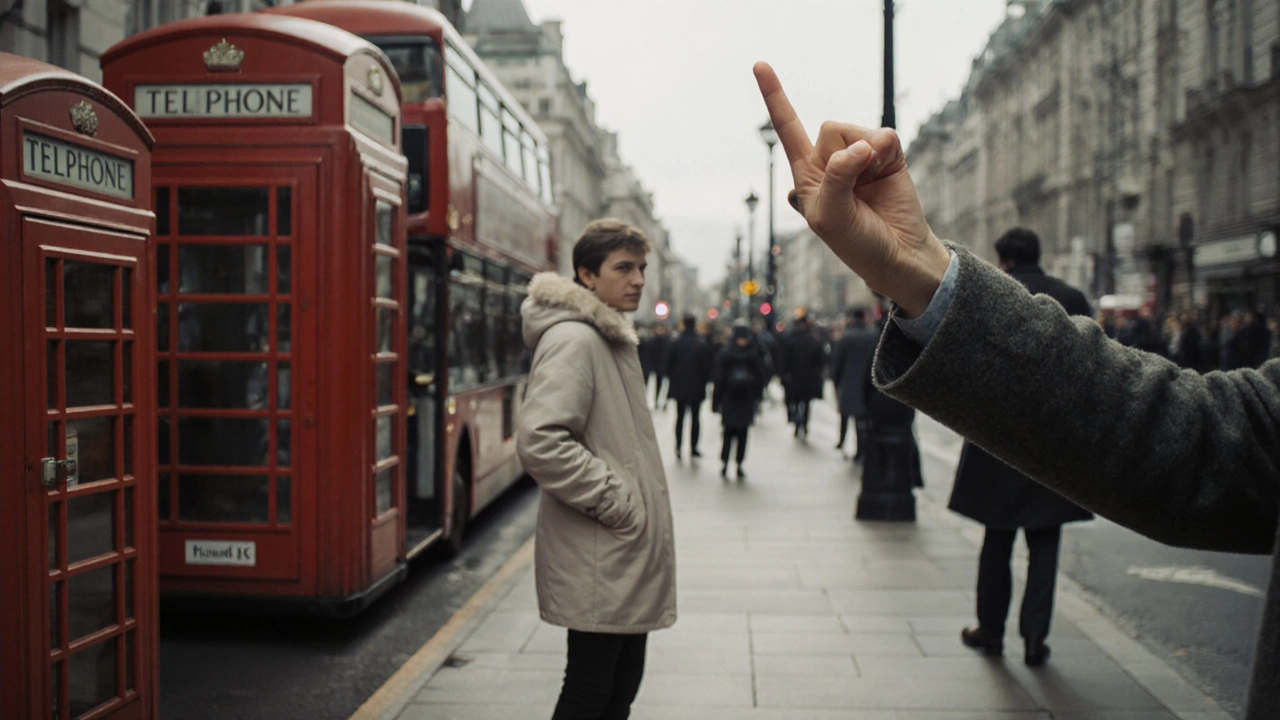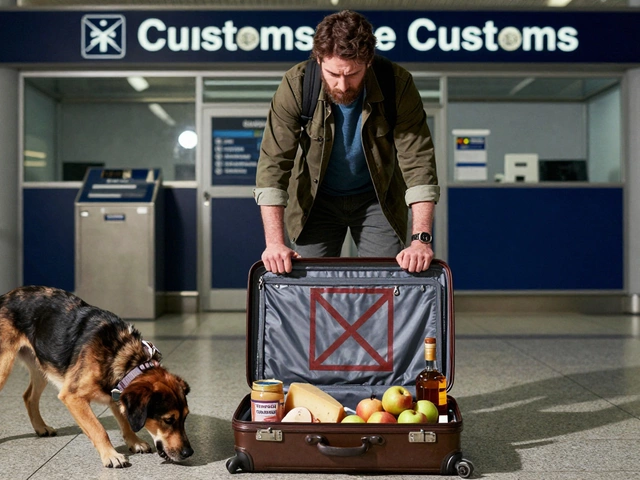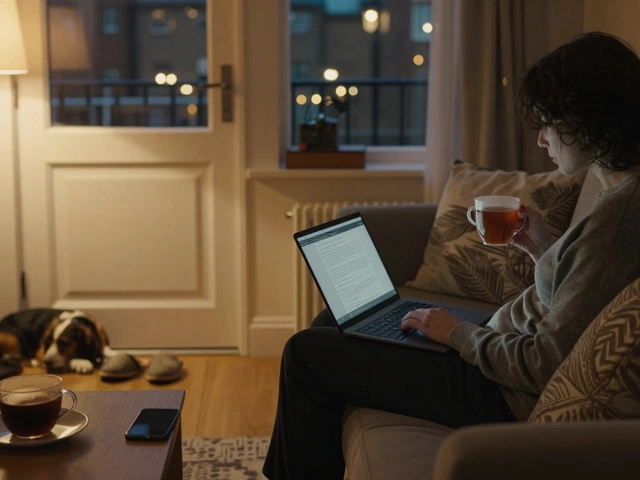UK Hand Gesture Quiz
What does the 'bad finger' gesture represent in England?
How does the British V sign differ from the 'bad finger'?
What should you do if someone flashes you the 'bad finger' in England?
Imagine you’re waiting for a bus in London and a passer‑by lifts a hand, fingers curled into a tiny fist. Instinctively you wonder: is that a friendly wave or something else? In England that pose is known as the bad finger - a hand gesture that signals strong displeasure or insult. Knowing when it appears and how locals react can save you an awkward encounter and keep your trip smooth.
What the ‘bad finger’ actually looks like
The gesture is simple: extend the middle finger while keeping the other four fingers folded down toward the palm. The back of the hand faces outward, and the thumb may rest on the curled fingers. In British slang the move is called a finger that conveys contempt. It’s the same shape you see in movies, but the cultural weight differs from place to place.
Why it’s considered rude in England
England, like much of the UK, values restraint in public interaction. A quick glance at the hand‑gesture etiquette guide shows that non‑verbal signals carry a lot of meaning. The “bad finger” bypasses polite conversation and tells the recipient, in a single instant, “I’m angry with you.” History books trace its roots to ancient Rome, where the raised middle finger was a crude way to say “go away.” Over centuries, the sign migrated across Europe and landed in Britain, where it landed a permanent spot among the most overtly offensive gestures.
How it differs from similar gestures
Britons also use the V sign (palm outward) as a friendly goodbye or a cheeky “victory” gesture. Flip the palm inward and the V sign becomes another insult, known as the “British V.” That version is less common than the middle‑finger but still worth noting. In contrast, the thumbs‑up signals approval in most Western cultures is universally positive. Understanding these nuances helps you read a crowd quickly and avoid misreading a harmless sign as a slur.
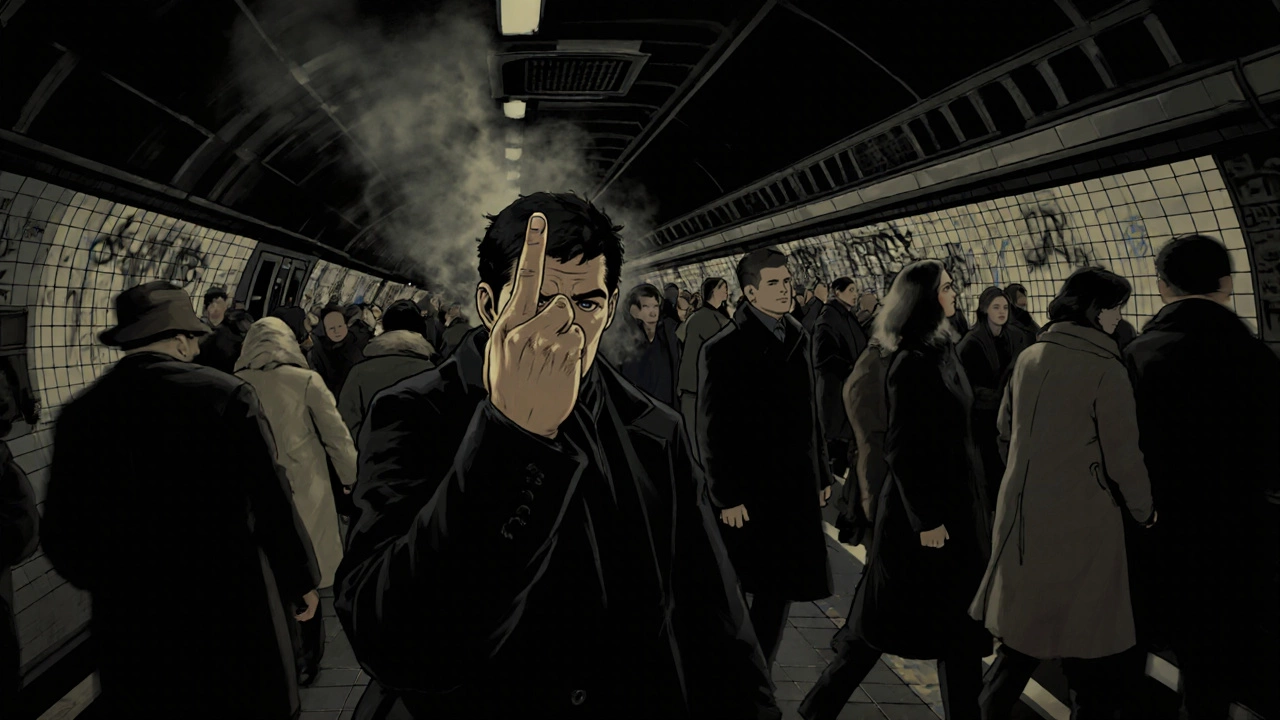
When you might see the ‘bad finger’ on the road
- During a heated argument on a crowded tube platform.
- Inside a noisy pub after a football match when fans are agitated.
- On the street when a driver cuts you off and a by‑stander reacts.
- In a comedy sketch or TV show-British humor loves exaggeration, so the gesture shows up in jokes.
If you spot it in any of these settings, the safest move is to keep your distance and not take it personally. Most locals use it as a quick vent, not a personal attack.
Tips for tourists: What to do (and what not to do)
- Don’t mirror the gesture. Returning a “bad finger” escalates tension and can land you in trouble.
- Keep your hands relaxed. If you’re nervous, a subtle clasped‑hand posture looks neutral.
- Read the surrounding body language. If the person looks angry, it’s best to back away.
- When in doubt, apologize verbally. A simple “I’m sorry” can defuse a situation faster than any hand signal.
- Know the legal side. While the gesture itself isn’t illegal, using it in a way that could be deemed harassment may lead to police involvement.
Common UK hand gestures and their meanings
| Gesture | Typical Meaning | When to Use |
|---|---|---|
| Middle finger (bad finger) | Strong insult, anger | Rarely appropriate; usually spontaneous |
| V sign (palm out) | Peace, victory, goodbye | Friendly farewell or celebratory moment |
| V sign (palm in) | Insult, British “V” | Occasionally used in jokes or confrontations |
| Thumbs‑up | Approval, okay | Positive acknowledgment |
| Raised fist | Solidarity, protest | Demonstrations, sports celebrations |
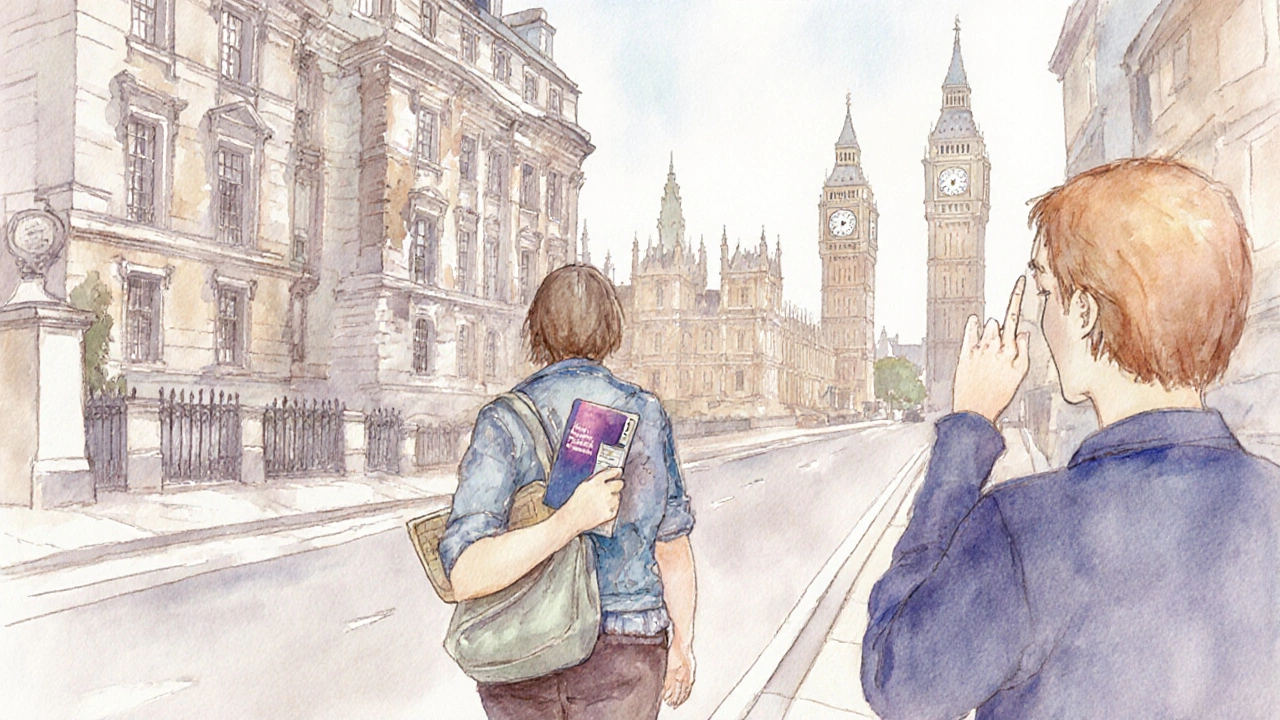
Quick checklist before you head out
- Know the shape of the bad finger - middle finger up, others down.
- Remember it’s considered rude in England and can spark a confrontation.
- Watch for the gesture in heated moments: traffic jams, crowded pubs, sports venues.
- Stay calm, don’t copy it, and use polite language to defuse tension.
- Read local body language - a relaxed hand means neutral, a tense fist signals conflict.
Why cultural awareness matters for travel
Every country has its own set of unspoken rules. In the UK, maintaining a “stiff upper lip” often means keeping emotions under wraps, and a sudden flash of a rude hand sign can feel extra jarring. Travelers who understand these cues blend in better, avoid misunderstandings, and enjoy more authentic interactions. Whether you’re chatting with a barista in Manchester or negotiating a train ticket in Edinburgh, a little knowledge about non‑verbal communication in Britain helps you read the room faster.
Frequently asked questions
Is the ‘bad finger’ ever acceptable in England?
Generally no. It’s seen as a strong insult. You might see it in comedy or a heated sports bar, but it’s not appropriate for polite conversation.
How does the British V sign differ from the ‘bad finger’?
The V sign with the palm outward is friendly; the same shape with the palm inward acts like an insult, similar to the bad finger but less common.
Can using the ‘bad finger’ lead to legal trouble?
The gesture itself isn’t illegal, but it can be part of harassment or public order offences if it provokes a fight or aggression.
What other rude gestures should I be aware of when visiting England?
Besides the middle finger, the palm‑in V sign and the “up yours” gesture (two fingers extended upward) are considered offensive. Avoid using them in any public setting.
If someone flashes me the ‘bad finger’, should I report it?
Only if it escalates into a threat or physical altercation. In most cases, walking away and staying calm is the safest response.
Armed with these details, you can navigate England’s streets without getting caught off‑guard by a sudden hand flash. Keep the cheat sheet handy, stay observant, and enjoy the sights - the UK’s charm isn’t in the gestures, but in its history, pubs, and green landscapes.

